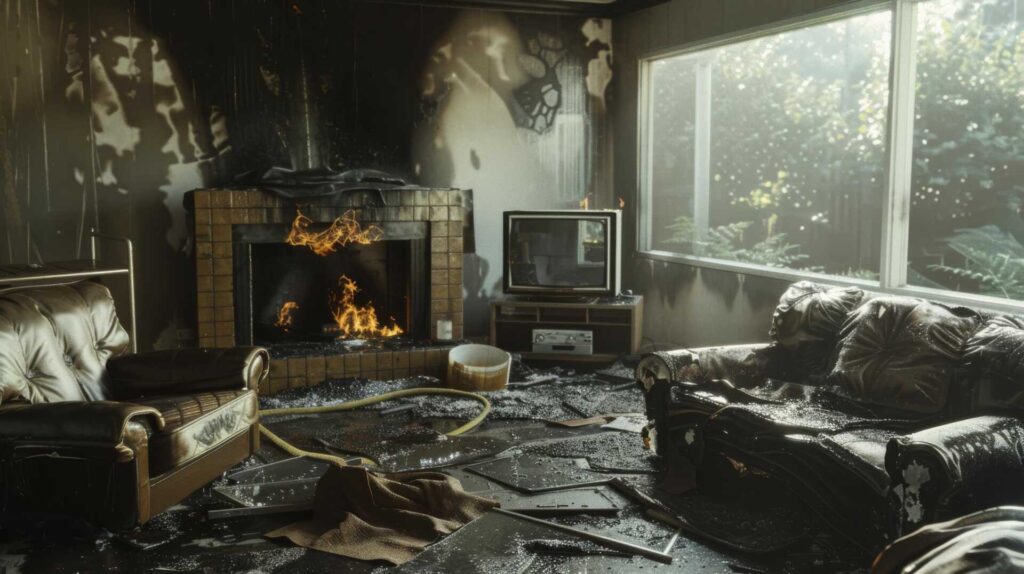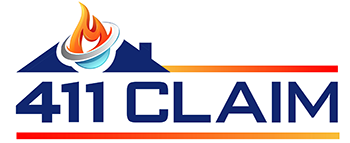
Contents
Budgeting for blaze cleanup is like steering through a maze—complex and overwhelming but attainable with the right approach. You need to assess the damage and prioritize tasks to allocate your resources effectively. Gathering estimates from professionals is just the beginning; understanding the nuances of costs can make or break your recovery efforts. What are the hidden expenses you might not have considered? Let’s unravel the details to ensure you’re fully prepared for the road ahead.
Key Takeaways
- Assess the extent of fire damage through a thorough inspection to determine necessary cleanup and restoration efforts.
- Gather multiple estimates from professionals to understand potential costs and budget accordingly for the cleanup.
- Include labor costs, materials, and specialized services in your budget to ensure comprehensive financial planning.
- Document damages meticulously for insurance claims to facilitate coverage and minimize out-of-pocket expenses.
- Prioritize cleanup tasks based on urgency to allocate resources effectively and streamline recovery efforts.
Understanding Fire Damage Restoration Costs
When a fire damages your property, understanding the costs of restoration is vital for effective budgeting.
You’ll need to take into account several factors influencing these expenses, including the extent of fire damage and the restoration techniques employed. Typically, restoration costs can vary markedly depending on the materials affected, the size of the area, and the complexity of the repairs.
For instance, structural damage might require extensive rebuilding, while smoke damage could necessitate specialized cleaning methods.
It’s important to get multiple estimates from restoration professionals to make sure you’re aware of the financial commitment involved. Additionally, factor in potential temporary housing costs if your home becomes uninhabitable during repairs.
Assessing the Extent of Damage
To effectively assess the extent of damage from a blaze, you should start with a thorough visual inspection of the affected areas.
After that, consider hiring professional assessment services to ensure you capture hidden issues that may not be immediately visible.
This strategic approach will help you understand the full scope of the damage and inform your cleanup budget.
Visual Damage Inspection
While evaluating the extent of damage from a blaze, a thorough visual inspection is essential for understanding the impact on the property.
Start by employing effective visual inspection techniques, focusing on structural integrity, smoke damage, and potential hazards. Look for signs of charring, discoloration, or warping in materials, which can indicate the severity of the fire’s effects.
Document your findings using organized damage documentation methods, such as photographs and detailed notes, to create a complete record. This information will guide your cleanup efforts and support any insurance claims you may need to file.
Professional Assessment Services
After completing a thorough visual inspection, engaging professional assessment services is a strategic next step in evaluating the extent of the damage.
These experts provide critical insights to ensure your fire safety measures are up to par and help with damage documentation, which is essential for insurance claims.
Consider the following when hiring a professional assessment service:
Experience: Look for specialists with a track record in fire damage evaluation.
Certifications: Confirm they’ve relevant certifications in fire safety and damage assessment.
Tools and Technology: Ask about the equipment they utilize for accurate assessments.
Comprehensive Reports: They should provide detailed documentation of the damage to facilitate your recovery process.
Key Factors Influencing Cleanup Expenses
Understanding the key factors influencing cleanup expenses is essential for effective budgeting, especially when faced with the aftermath of a blaze.
First, evaluating your cleanup priorities will help you determine where to allocate resources. Prioritizing tasks like debris removal, smoke damage repair, and structural evaluations can streamline your efforts.
Next, the extent of the damage plays a significant role in financial planning. More extensive damage typically requires more manpower, materials, and time, which can ramp up costs quickly.
Additionally, location matters; areas with higher living costs often see increased labor rates.
Finally, consider the type of materials affected. Certain substances, like hazardous materials, require specialized handling, adding to expenses.
Estimating Labor Costs for Restoration
Estimating labor costs for restoration is essential to developing an accurate budget.
By understanding labor wage trends and how they impact restoration project timelines, you can make informed decisions about your budget.
Here’s how to approach it strategically:
Research Local Wage Rates: Check the current rates for skilled labor in your area to ensure you’re competitive.
Assess Project Scope: Determine the size and complexity of your restoration work to estimate the number of labor hours needed.
Factor in Skill Levels: Different tasks require different expertise, so consider varying wage rates based on the skill set required.
Account for Overhead Costs: Don’t forget to include insurance, benefits, and other overhead costs that contribute to overall labor expenses.
Materials and Equipment Expenses
When budgeting for blaze cleanup, you need to account for essential cleanup supplies and the costs associated with renting equipment.
Investing in safety gear is vital to protect your team while they work.
Analyzing these materials and equipment expenses will ensure you allocate funds effectively for a successful restoration.
Essential Cleanup Supplies
Cleaning up after a blaze requires a strategic approach to selecting crucial supplies, and budgeting for these materials is imperative.
Having the right items on hand streamlines the process and ensures safety. To effectively manage your expenses, create cleanup checklists and identify reliable supply sources.
Here are four crucial supplies to contemplate:
- Protective Gear: Gloves, masks, and goggles to keep you safe.
- Cleaning Solutions: Fire-safe cleaners to remove soot and debris.
- Trash Bags: Heavy-duty bags for collecting waste materials.
- Tools: Brooms, shovels, and rakes for physical cleanup.
Equipment Rental Costs
After gathering the necessary supplies, you’ll want to contemplate the costs associated with renting equipment for the cleanup process.
Different equipment types, like bulldozers or chipper machines, can notably impact your budget. The rental duration plays a vital role in your overall expenses; longer rentals often lead to better rates.
Analyze your cleanup timeline to determine how much time you’ll need for each piece of equipment. It’s important to compare rental companies, considering both price and equipment quality.
Don’t forget to account for potential delivery fees and deposits, as these can add up. By strategically evaluating your equipment needs and duration, you’ll create a budget that aligns with your cleanup goals and fosters a sense of community as you tackle this challenge together.
Safety Gear Investment
Investing in safety gear is essential, especially since it protects you and your team during the cleanup process. Choosing the right safety gear types can make all the difference in ensuring everyone’s well-being.
Consider allocating funds for the following items:
- Fire-resistant protective clothing: Essential for preventing burns.
- Respirators: Protects against harmful smoke and particulates.
- Heavy-duty gloves: Safeguard hands from sharp debris and chemicals.
- Safety goggles: Shields eyes from irritants and flying particles.
While it might seem like a significant expense upfront, remember that proper protective clothing and gear can prevent injuries and reduce long-term costs.
Insurance Considerations for Fire Damage
When it comes to recovering from fire damage, understanding your insurance coverage is essential for effective budgeting. Start by reviewing your insurance policies to determine the extent of your fire coverage. Many homeowners mightn’t realize that certain policies have limitations or exclusions, which could greatly impact your recovery.
Look for specifics like replacement cost versus actual cash value; this distinction can affect how much you receive after a loss. If you haven’t done so recently, consider contacting your insurance agent for a thorough review of your coverage.
Additionally, be proactive in documenting damages, as this will streamline the claims process. Knowing what’s covered can help you budget effectively for repairs and replacements, ensuring you don’t face unexpected expenses later.
Ultimately, being informed about your insurance can foster a sense of security and belonging, knowing you’re prepared to navigate the aftermath of a fire.
Budgeting for Additional Services
While you may have a solid plan for repairing fire damage, it’s vital to budget for additional services that often accompany recovery efforts.
These services can greatly impact your overall financial plan, so consider incorporating the following additional service options:
Debris Removal – Proper cleanup of hazardous materials is critical for safety.
Air Quality Testing – Confirm your environment is safe post-fire by checking for harmful particles.
Odor Removal – Specialized treatments from cleanup service providers can eliminate lingering smoke odors.
Restoration Services – Beyond basic repairs, you may need experts for structural restoration.
Preparing for Future Fire Risks
After addressing immediate recovery needs, it’s wise to shift your focus toward preparing for future fire risks. Implementing effective fire prevention strategies is essential.
Start by evaluating your property for vulnerabilities—overhanging branches, dry vegetation, or flammable materials—and take steps to mitigate these hazards. Creating defensible space around your home can greatly reduce potential fire damage.
Engaging in community preparedness initiatives fosters a sense of belonging and collective resilience. Join local fire prevention workshops or community meetings to stay informed about best practices and resources.
Collaborating with neighbors to create a shared action plan can enhance safety and strengthen community ties.
Additionally, consider investing in fire-resistant materials for your home and maintaining an emergency kit.
Summary
Budgeting for blaze cleanup is essential for a smooth recovery. By understanding fire damage restoration costs and planning for additional services, you can avoid financial surprises. Take the time to assess the damage, gather estimates, and factor in all expenses, including temporary housing. With a strategic approach, you’ll navigate the restoration process confidently and effectively, ensuring your space is safe and welcoming once again.
Recent Posts
Pricing Insights for Damage Restoration Services
When unexpected events disrupt your life, steering through the costs of damage restoration can feel
Top Storm Damage Repair Techniques for Homeowners
When storms release their fury, the aftermath of storm damage can feel overwhelming, much like
Understanding Fire Damage Restoration Service Costs
Understanding what factors influence these prices is essential for anyone facing the aftermath of a
